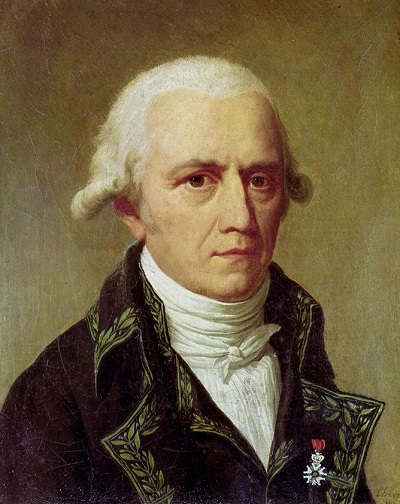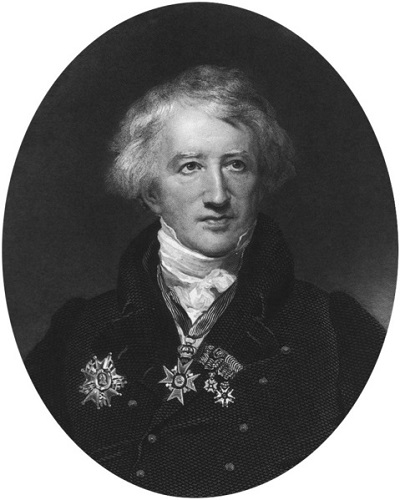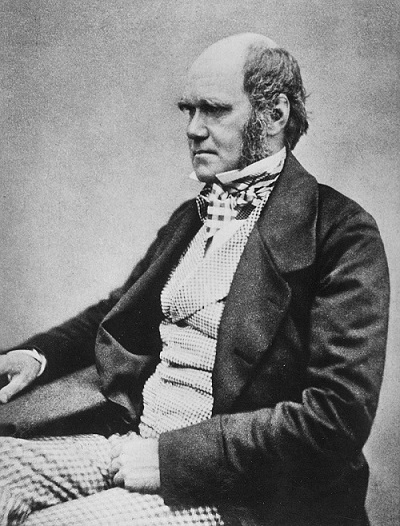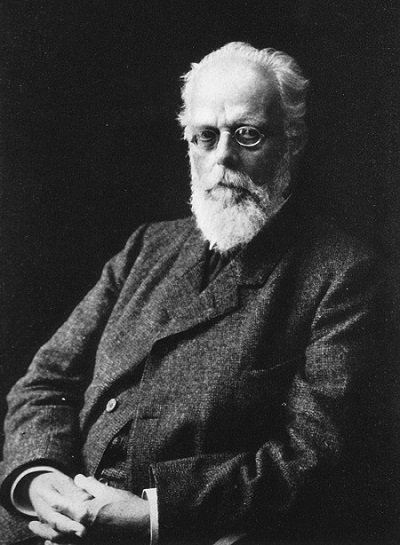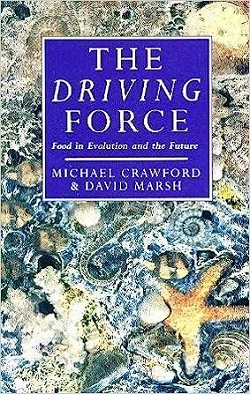Positive Health Online
Your Country

Nutrition, Evolution and Environment
listed in dna gene expression, originally published in issue 286 - May 2023
The dangerous fallacy - of "the all-sufficiency of natural selection’’ to which the scientific and cultural world has adhered since the late 19th century has now been exposed as inexact – untrue – false science, by the growing understanding of epigenetics – reversible-generational-change. [1] This egregious mistake has been catastrophic for the environment worldwide. Since the early 1890s this error seemed to excuse everyone using the environment as a gigantic garbage bin as if the environment did not matter.
Why Did Darwin Not Use The Word ‘Environment’, Preferring ‘Conditions
Of Life’ Or ‘Conditions Of Existence’?
The answer to this conundrum lies in the muddle that Jean-Baptiste Lamarck got mixed up in 60 years or so earlier. For whilst Lamarck was the leading ‘Transformiste’ of his day - believing that lifeforms can and do change during their lifetimes, in response to changes in their environmental conditions; contrary to the orthodox Creationists' belief that lifeforms didn’t change during their lifetimes. It made Lamarck hugely controversial.[2]
Jean-Baptiste de Lamarck
https://en.wikipedia.org/wiki/Jean-Baptiste_Lamarck#/media/File:Jean-Baptiste_de_Lamarck.jpg
Lamarck’s hypothesis was that environmental change caused lifeforms to change, simply because they needed to change. Further, the environmental change was caused by God, so Lamarck’s theory relied on God. In contrast to Darwin’s ideas that life evolved by natural selection, God was only included at the end of his great tome ‘On the origin of species’. But by reading the last paragraph of chapter 6 in the Origin he clearly states that natural selection is itself driven by ‘Conditions’… of life… or ‘conditions of existence’.[3]
George Cuvier
https://en.wikipedia.org/wiki/Georges_Cuvier
The controversy was to be magnified after Lamarck’s death, for whilst ‘the great’ George Cuvier – the leading Catastrophist of his day*, was scheduled to read the eulogy at Lamarck’s funeral, he too died. Cuvier died only a year after Lamarck, and the eulogy, although originally written by Cuvier, was read in 1832 by M le Baron Silvestre. The Academy did not allow the text of the eulogy to be printed in the form originally delivered by Cuvier.
Silvestre played a dirty trick on the unfortunate Lamarck by suggesting that Lamarck had said that if the environment changed, lifeforms wished or willed themselves to change (le desire)– instead of saying that they needed to change (le besoin), thus Lamarck’s already confusing theories into a laughing stock which Darwin was so anxious to avoid being associated with.
* Catastrophists believed that species did not change, but every so often God would wipe everything out, and evolution would start all over again.[3]
Charles Darwin
https://en.wikipedia.org/wiki/Charles_Darwin#/media/File:Charles_Darwin_seated_crop.jpg
Darwin’s Conditions
Darwin, fearing being associated with Lamarck’s environmental theories, thus formulated his theory of natural selection which was itself driven by ‘the conditions of life’, or ‘conditions of existence’, by which of course he meant the environment. Darwin then confused his readers by suggesting at various times in his book that natural selection was the most important factor in the evolutionary process whilst at other times saying that conditions of existence were the most important. This apparent contradiction came back to bite him, making it simple to mistranslate him – which August Weismann, his successor and the creator of neo-Darwinism – managed to do quite easily with his two historic papers “All sufficiency of natural selection” and his “Isolation of the germplasm theory”, both fake science as we have only recently discovered thanks to understanding the new science of Epigenetics – meaning reversible generational change - as mentioned above.[4]
A loose definition of the term epigenetic used to be covered by the phrase ‘environmentally induced modification’ (EIM). Until the beginning of the last century, it was generally accepted that changes in the environment could result in a reproducible change in the shape, form, function or behaviour of life forms in succeeding generations. Such change was however not the fixed type as occurs with mutations, but reversible, dependent on the environment’s stability. It was not therefore considered important in evolutionary terms. However, since the human genome map was completed in the early 21st century, such reversible change is, at last, being considered important: this is now known as epigenetic change – the term coined by C H Waddington in 1942. Debate continues amongst geneticists around this subject to this day.[5]
Augustus Weismann
https://en.wikipedia.org/wiki/August_Weismann#/media/File:August_Weismann.jpg
The Isolation Of The Germplasm
Weismann’s theory of the isolation of the germ plasm
It was Professor August Weismann from the University of Freiburg, who played the next opposing move. In the early 1880s, he published his theory of the ‘continuity of the germ-plasm’, an equal and opposite idea to Darwin’s concept of ‘pangenesis’, which was a seemingly wild hypothesis proposing that environmental changes became registered in the germplasm (the old term for DNA before genes were discovered in the early 20th century). Weismann, however, insisted on the absolute isolation of the germplasm from ‘somatoplasm’ or other tissue of the body. (Germplasm. . . the physical basis of inheritance . . . germ-cells are the reproductive cells, the opposite to somatic cell; primitive male or female element.) What he managed to persuade the scientific world of his day to believe was that, in modern terms, the gene-bearing DNA in reproductive or sexual cells lived a bunker-like existence, shielded from all environmental and somatoplasmic pressures with few exceptions. 200 or so years later, it took epigenetics to demonstrate this to be untrue.[4]
Isolation of the Germplasm Theory
Weismann argued this absolute gulf with convincing rhetoric. Whilst the body gave of itself, and actually created the germplasm, fed it, nurtured it and acted as its vehicle, it could never affect the germplasm itself. Thus, in its splendid isolation, there could be nothing that could affect the structure of the genetic mechanism via the body tissue. This move is thought by some to have been a check to the direction that in his later years, Darwin was moving towards, veering uncomfortably close to the ideas that Lamarck had had before at the beginning of the 19th century.
Indeed, Darwin, having been so utterly condemning of Lamarck, had taken his ideas on the effects of habit, or use and disuse (without giving any credit), and was seen to be playing into the hands of the opposing camp of the old-school naturalists and organic evolutionists: possibly posing political, even theological, threats.
But Weismann’s insistence on the insulation of the genetic mechanism from any actions of the body put an end, for the time being, to this drift. His erudite argument, which was for his time regarded as scientifically remarkable, strongly reinforced the focus of attention on the ‘internal’, into the heart of the hereditary mechanism.
Yet by insisting that information travelled only one way, from the gene to the cell via RNA, Weismann was incorrect as epigenetics shows that information goes both ways. So not only was Weismann wrong about the germplasm being isolated, but the “all-sufficiency of natural selection” is also pseudo science.
Darwin had first taken the focus of attention into the organism, lessening respect for the chemistry and nurturing qualities of nutrition. In those days very little was known about nutrition.
Weismann strongly reinforced those ideas and was also responsible for the creation of neo-Darwinism. He went blind in later life, turning to theory from experimental work, and formulated his theory of germinal selection, according to which variation was ‘directed by competition for nourishment among ‘‘character-units’’ of the germ-plasm’ (genes had yet to be discovered.)
The Five Phases
A bird's eye view of evolution from the Big Bang through all its various epochs shows us that whatever lifeform evolved in each, the conditions of life or conditions of existence – so named by Charles Darwin in 1859 and thenceforth – had to be right for those plants or creatures which were to evolve and prosper.
Students of evolution rarely fail to be impressed when examining each evolutionary epoch and its various phases, they find again and again that in all cases when a new, more highly evolved life form becomes established, gathering itself for its future of abundance, the supporting ‘conditions’ had to be in place first: the right building blocks for those species (the chemistry of their food, the physical conditions, heat & light, etc.), thus preparing for the future dance of the DNA within the environment of that particular epoch.
To see this more clearly we’ll look at a few epochs of evolution.
Each Epoch can be Divided into Five Parts.
- Phase One: sees a rich nurturing environment supplying the right conditions: temperature, light, food and other basic living materials to small populations, which under such protective and stimulating conditions reproduce rapturously; populations thrive and grow successfully.
- Phase Two: is more of the same, but population numbers have increased exponentially.
- In Phase Three: populations have increased so considerably, to the point where there is a dwindling of food and resources per capita - any species or type which has extra abilities in capturing their necessities will succeed over less efficient types. (This is where Darwinian competition comes into play for the first time: not in Phases One or Two.)
- This carries on through Phase Four, until its end, when an exhausted environment fails to supply the needs of hugely increased populations and even the best-fitted cannot survive.
- Phase Five is Phase One of the new epoch, when different species, better fitted to the new environmental matrix become dominant (and the new chemistry involved in that matrix is often brought about by the activities of the sheer numbers of the previously dominant species).
The earliest life forms, the blue-green algae, were primitive prokaryotes such as bacteria and archaea (cells with no inner cell membranes) that were dominant for over two and a half billion years. They were succeeded by eukaryotes (cells with inner cell membranes such as mitochondria). They produced oxygen as a by-product of photosynthesis, and over this time slowly oxygenated the planet. Equally importantly they produced proteins, carbohydrates and essential fatty acids – lipids or fats – which were rich in omega-3 including docosahexaenoic acid – DHA. The Blue-Greens laid down the basic building blocks of life which we rely on now and for the foreseeable future.
So DHA played a huge role in the 2.5 billion years of early blue-green life. In their teeming zillions the Blue-Greens (which divide into four every 28 hours) gradually oxygenated the planet which had previously been without oxygen (anaerobic). When the oxygen content of the air rose from 0% to 3% of today’s levels, and oxygen began to be used to provide superior fuelling, animal life fairly whooshed into being in top gear. Within 500 million years all the phyla – branches of the Lifeform tree – were laid down, and evolution took off, with the creatures getting larger and larger until the age of the great reptiles, and of course the dinosaurs.
Their ‘conditions of life’, or their environment, was essential for their success. A vitally important part of these conditions was an environment rich in DHA: a nutrient the landlocked food chain gives only limited access to.[5]
Over thousands of millions of years of ‘blue-green’ activity, the environment of all living things was spectacularly rich in DHA. Fish and reptiles need omega-3 lipids for reproduction: they prospered for hundreds of millions of years, cashing in on the billions of years of the Blue-Greens’ exertions.
Now we take a great leap to the end of the Cretaceous period, roughly 70 million years ago when the dinosaurs disappeared, after which the mammals rose to dominance.
Here we can see a further example of the environmental mix coming first, before the evolutionary change actually happened – in the evolution of the placental mammals. For their evolution to be possible there had to be a widely available source of arachidonic acid (ARA, sometimes written AA) the long-chain omega-6 linoleic acid (see below) which became widely available only after the demise of the dinosaurs. Then a strange thing happened that no one has yet managed to explain entirely.
In the terrible obliteration of most terrestrial animal life, when the dinosaurs met their pitiful end and some creatures retreated to flourish in the sea, most plant life changed from ferns and Ginkgos to flowering and seed-bearing plants and trees.
We have the giant meteorite theory, the 100,000-year period of intense volcanic activity theory, and rare metal theories; but speculation also points to a giant sun-flare dowsing the planet with solar storms and unusual clouds of radiation or quantum activity, which effected a genetic mutation that suddenly plants that produced seeds, a rich source of linoleic acid from which ARA is made, biosynthetically by the animals that eat the seeds.
ARA is a vitally important part of the vascular system: the mammalian placenta is basically a new vascular system specially created to support the nutritional and other needs of the growing foetus. The mammalian explosion couldn’t have happened without the ARA from omega-6 linoleic acid: which, it’s worth repeating, only became widely available when the flowering and seed-bearing plants took centre stage.[5]
The Driving Force, Crawford and Marsh http://www.davidmarsh.org.uk/?David_Marsh
'The Driving Force, Food in Evolution & the Future', published by Heinemann, Harper & Row, N.Y., 1989, and by Mandarin, 1991.
The precursor to Nutrition and Evolution, closely similar content.
https://www.amazon.co.uk/Driving-Force-Food-Evolution-Future/dp/0749306688/ref=sr_1_14
Summary
To summarise, since the early 1890s when August Weismann’s two crucial papers were published, surmising to show that the germplasm lived in total isolation from environmental and bodily (somatoplasmic) influences, and that information from the (yet to be discovered) DNA went purely in one direction only – out into the cell – until early 21st century discoveries unravelling the workings of epigenetics showed information also went in the opposite direction as well – will overturn old dogmas in evolution theory, clearly showing that our own future is in our own hands, creating a new paradigm in scientific understanding.
Today, as we witness the increase of greenhouse gases and changing weather patterns throughout the world, the warming of the oceans, the splitting off (‘calving’) of icebergs and ice sheets, the rise in sea levels and temperature, the forest fires, is it that hard to conceptualise that Darwin’s conditions of existence have been driving evolution from the Big Bang?
But as neo-Darwinism has for a century reached quasi-religious stature, it will be a hard paradigm to shift.
References
- Handbook of Epigenetics: The New Molecular and Medical Genetics. Editor: Trygve Tollefsbol, Publisher: Academic Press; 1st edition. Evolutionary Epigenetics. Chapter 26 - Epigenetics in Adaptive Evolution and Development: The interplay between evolving species and epigenetic mechanisms. ISBN-10: 0123757096, ISBN-13: 978-0123757098. House SH. Refs pp1-3. 21 Oct 2010.
- Lamarck, J-B. Philosophie Zoologique, ed Martin, Charles (2 vols), Paris, Savy. 1873.
- Darwin, C. On the Origin of by Means of Natural or The Preservation of Favoured in the for Life. 6th Edition, London. John Murray. 1872.
- Weismann, A. The Effects of External Influences on Development. Romanes Lecture, London, Frowde. 1894.
- Crawford, M.A., Marsh, D.E. (1989). The Driving Force, Heinemann, London and (1995). Nutrition and Evolution, Keats, USA.
Comments:
-
No Article Comments available
